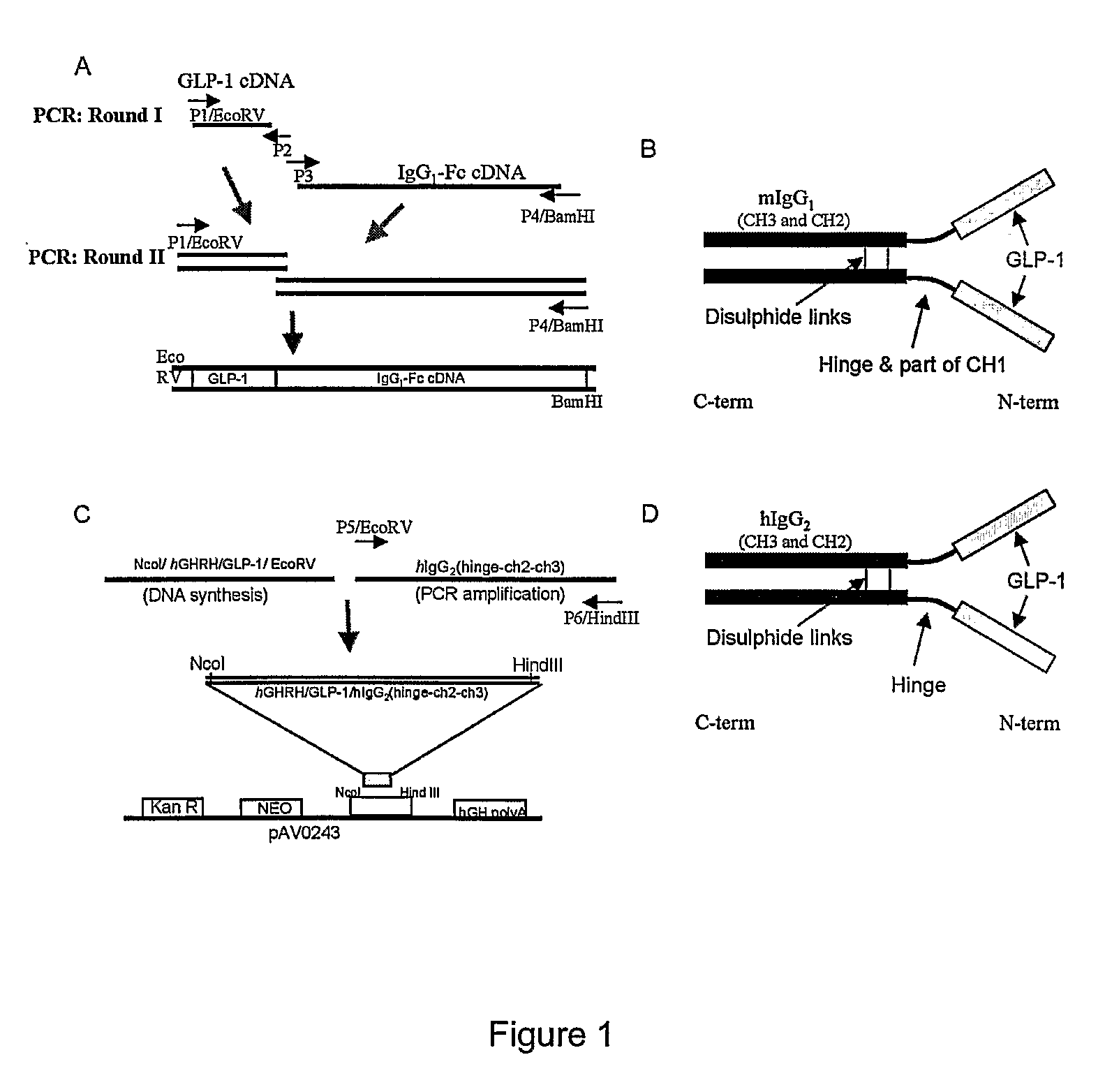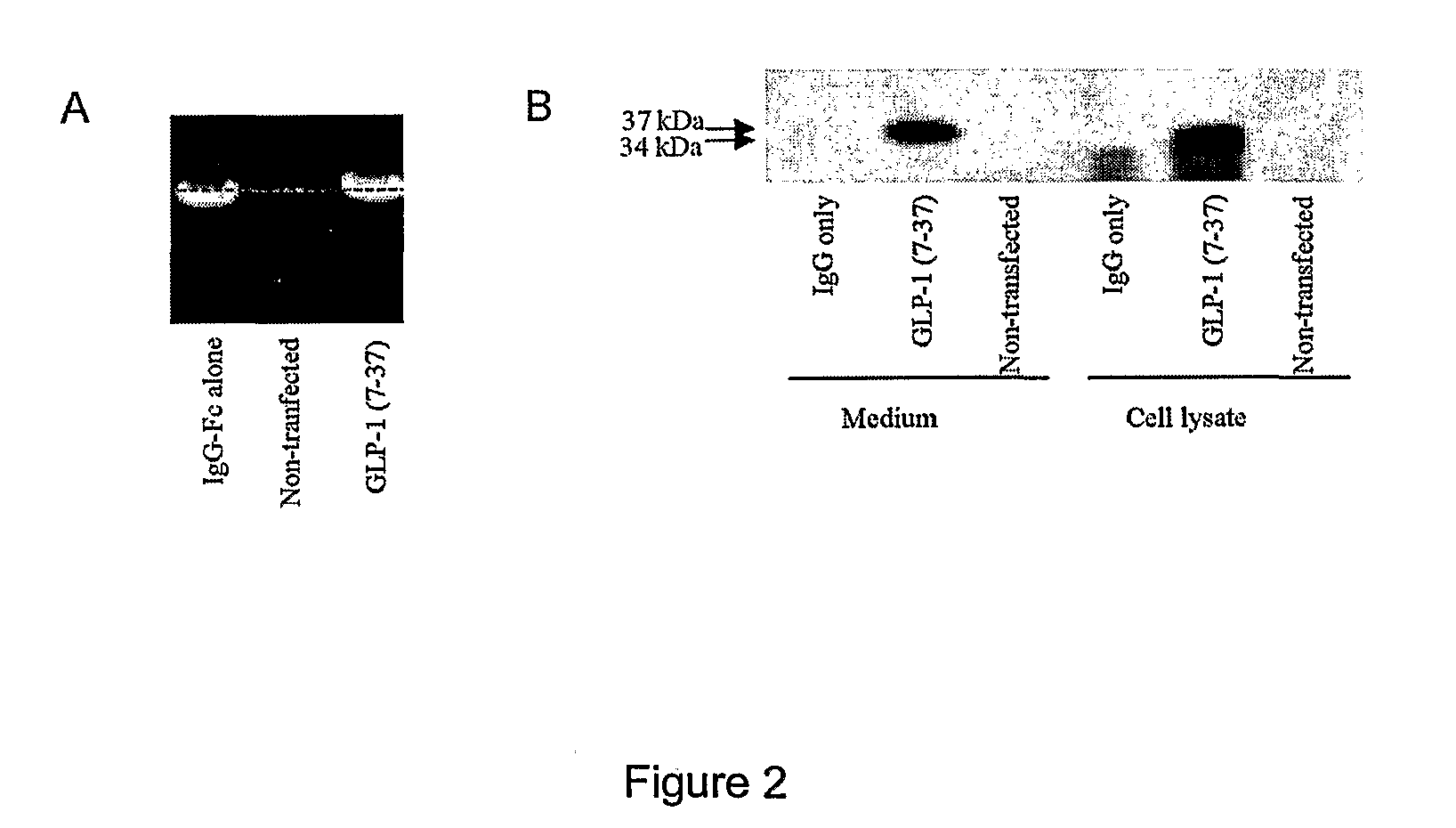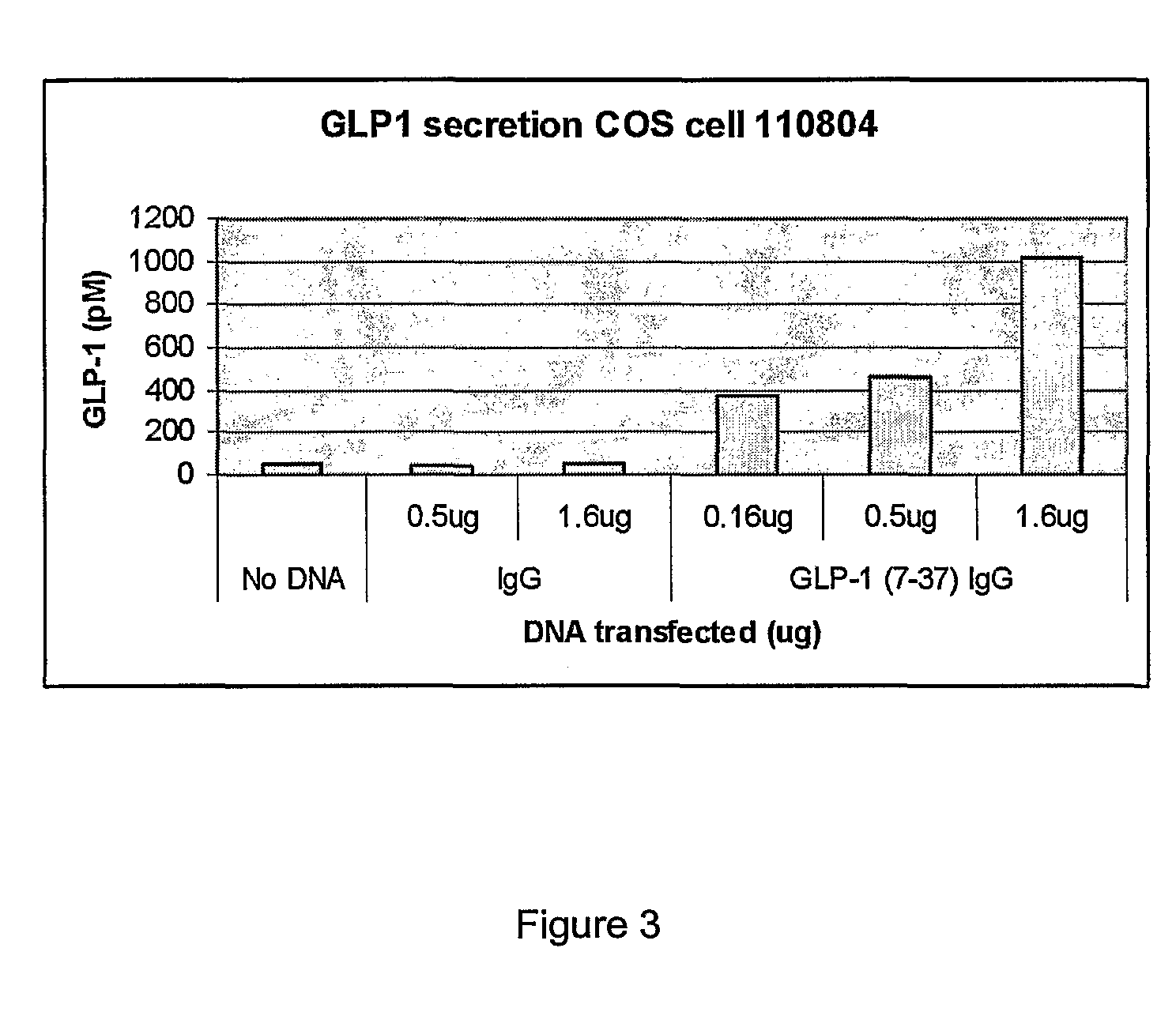GLP/1/exendin 4 IgG Fc fusion constructs for treatment of diabetes
a fusion construct and insulin technology, applied in the field of diabetes prevention and treatment, can solve the problems of not preventing the progression of the disease nor the development of severe diabetic complications, limited largely by limited resources, and reducing so as to reduce the apoptosis of beta-cells, enhance the beta-cell mass, and increase the proliferation of beta-cells
- Summary
- Abstract
- Description
- Claims
- Application Information
AI Technical Summary
Benefits of technology
Problems solved by technology
Method used
Image
Examples
example 1
Plasmid Construction
[0095]A vector encoding a fusion protein consisting of the human GLP-1 (7-37) and mouse IgG1-Fc using overlap PCR was constructed. The IgG1-Fc region contains the IgG1 constant heavy-chain (part of CH1, hinge, CH2 and CH3). An IgK secretion leader peptide sequence was fused with the GLP-1 sequence that directs the secretion of the synthesized peptide into the medium. The cDNA encoding the fusion protein hGHRH / hGLP-1 was chemically synthesized, ligated to a PCR-amplified cDNA fragment encoding human IgG2 FC (hinge-ch2-ch3) and inserted into the NcoI and Hind III sites of the pAV0243 vector to generate GLP-1 / hIgG-Fc / pAV0243. The secretable GLP-1 / hIgG-Fc fusion protein contains the IgG2 constant heavy-chain (hinge, CH2 and CH3). A GHRH secretion leader peptide sequence was fused with the GLP-1 sequence that directs the secretion of the synthesized peptide into the medium. This strategy ensured the generation of a GLP-1 fusion with an active histidine residue at the ...
example 2
Mammalian Expression of GLP-1 / IgG-Fc Fusion Proteins
[0099]To assess the capacity of the vectors in terms of expression and secretion of the GLP-1 / IgG-Fc fusion proteins, constructs were transiently transfected into COS-7 cells. Forty-eight hours after transfection, to evaluate the expression of the fusion constructs, total RNA from the transfected cells was prepared and expression was analyzed using RT-PCR. Transcripts for the GLP-1 / IgG-Fc fusion constructs and IgG-Fc control constructs were detected using the gene specific primers (FIG. 2a). No transcripts were detected in non-transfected samples.
[0100]The lysates and conditioned medium from the transfected COS-7 cells were also analyzed for expression of the fusion proteins by Western blotting using anti-mouse antibodies. As shown in FIG. 2b, Fc fusion proteins were detected in both the medium and cell lysates. The fusion proteins migrated at 35 kDa, the size of the fusion protein monomers under the SDS-PAGE reducing conditions. D...
example 3
Purification of GLP-1 / IgG-Fc Fusion Proteins from Mammalian Cell Culture Medium
[0104]For mini-purification, the medium collected from the transfected cells (typically 2.5 mL from each well of a 6-well plate) was added to 70 μL (packed volume) pre-washed Protein G Sepharose 4 Fast flow resin (Amersham-Pharmacia, Piscataway, N.J.) in buffer containing 100 mM Tris pH 8.0 and 150 mM NaCl. After overnight incubation at 4° C. and extensive washing with the Tris buffer, proteins were eluted directly from the resin by 30 μL of SDS sample buffer.
[0105]To acquire larger quantities of the fusion proteins, midi-scale purifications using Protein G sepharose columns employed 50 mL of conditioned culture media of COS-7 cells transfected with GLP-1 / IgG-Fc-fusion vectors and grown in 15 cm dishes. Briefly, 50 mL of DMEM medium collected 48 hours post-transfection or from the cells stably expressing the fusion proteins were incubated with Protein G sepharose (1 mL packed volume, Amersham-Pharmacia). ...
PUM
| Property | Measurement | Unit |
|---|---|---|
| pH | aaaaa | aaaaa |
| pH | aaaaa | aaaaa |
| packed volume | aaaaa | aaaaa |
Abstract
Description
Claims
Application Information
 Login to View More
Login to View More - R&D
- Intellectual Property
- Life Sciences
- Materials
- Tech Scout
- Unparalleled Data Quality
- Higher Quality Content
- 60% Fewer Hallucinations
Browse by: Latest US Patents, China's latest patents, Technical Efficacy Thesaurus, Application Domain, Technology Topic, Popular Technical Reports.
© 2025 PatSnap. All rights reserved.Legal|Privacy policy|Modern Slavery Act Transparency Statement|Sitemap|About US| Contact US: help@patsnap.com



